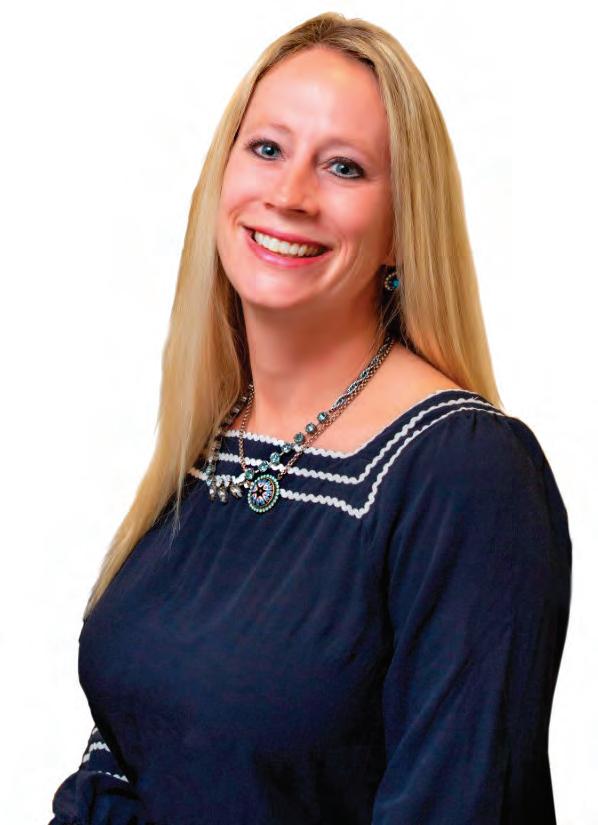SENIOR DRIVING SAFETY: WHEN IS IT TIME TO PUT DOWN THE KEYS?

SOCIAL SECURITY & MEDICARE PLANNING
THE LADY OF A MILLION DIFFERENT FACES

SENIOR DRIVING SAFETY: WHEN IS IT TIME TO PUT DOWN THE KEYS?

SOCIAL SECURITY & MEDICARE PLANNING
THE LADY OF A MILLION DIFFERENT FACES


Attorney Deandra M. Grant is the Managing Partner of Deandra Grant Law’s five offices. She is an international speaker on DWI law, science and trial skills. As the author of the annually updated Texas DWI Manual, she is viewed by her peers as being a leader in her field. Deandra understands the science behind alcohol absorption and elimination rates and can use this knowledge to competently defend you.
Deandra formerly was an assistant district attorney. Her tenure as a prosecutor focused on DWI prosecutions which has given her firsthand knowledge on how to counter the prosecutor’s evidence and strategy. Deandra has spent hundreds of hours in training courses and programs related to DWI defense and has completed the certification course to administer standard field sobriety testing (SFST), the same training course taught to police officers nationwide on how to identify drunk drivers during traffic stops. As a certified SFST Instructor, Deandra has taught the course to other attorneys. She’s also completed the coursework on DWI forensic blood and urine testing.


“I have a masters degree in pharmaceutical science and a graduate certificate in forensic toxicology. I am able to take apart evidence in ways a lot of other attorneys are not able to do. The most important part of my job is being the barrier between the government and my client. Standing between them. Making sure their rights are protected.”
–DEANDRA GRANT






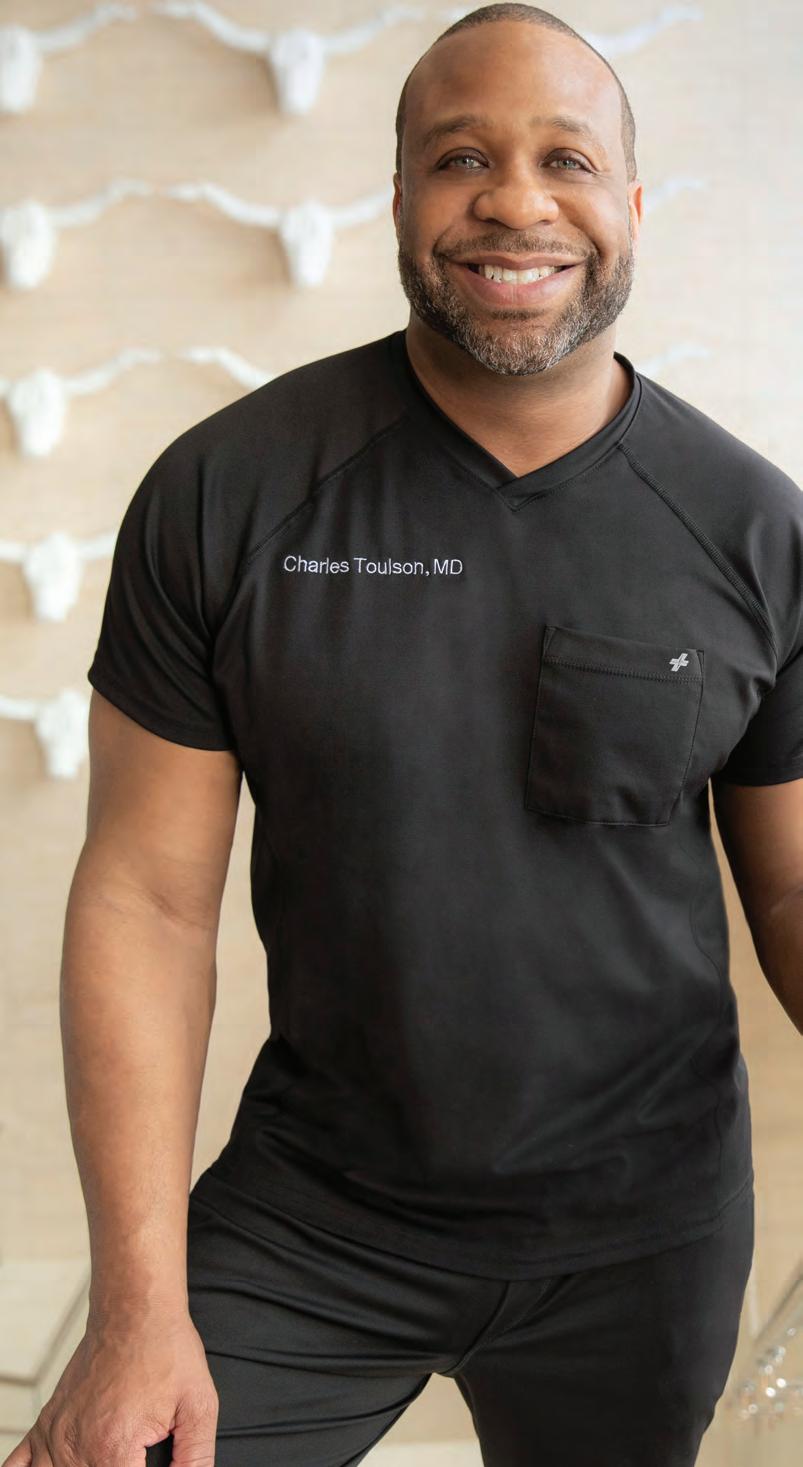



In this issue, we’re going gaga for Lady Gaga. After watching her in House of Gucci, we knew we had to feature her in the magazine. Her total transformation into, as she describes “…some edgy, sexy, chancy, risky b*tch…some punky Italian gold digger” was masterful and should have earned her a leading lady Oscar.
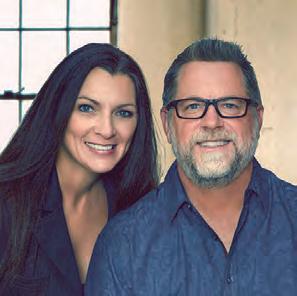
If her track record is any success, there’s no doubt it’ll happen eventually. Indeed, after reading this issue’s cover story, it’s obvious that Lady Gaga was born to be a superstar— on the stage and screen. Yet, while it may seem everything’s gone according to plan for Lady Gaga, as you’ll fid reading her story on page 8, she’s hit some potholes on the way to superstardom.
Switching drastic gears, much like Lady Gaga’s penchant for transformation, we do a total 180 to delve into the topic of senior driving safety. While aging is a natural part of life, it does not make the conversation any easier when we need to tell the ones we care about that it might be time to put away the keys. Knowing the signs that your aging loved one might need to stop driving for the sake of their safety and others and understanding how to start the conversation can go a long way. Turn to page 40 to get practical advice on the subject.
Another prickly topic we tackle in this issue—social security and Medicare planning. Thankfully, the legal minds at Leu & Peirce Elder Law Attorneys address the subject with a wealth of knowledge in the article on page 35. They delve into the history of social security and the fiancial impact it can have on funding long-term care needs. If you’re approaching your Golden Years, it’s a must read!
Of course, there’s more. Get reading!
Be well!

PRESIDENT & CEO
SAM HOUSTON
VICE PRESIDENT & CFO
SPRING HOUSTON
EDITOR, FEATURE WRITER & SOCIAL MEDIA SONDRA BARR
ART DIRECTOR
VANESSA FRYER
ACCOUNTS MANAGER JENNIFER BEAVERS
WEBSITE LYDIA ROGERS
ADVERTISING & SALES
TEXAS: Denton County, Dallas County, Collin County
TEXAS & OKLAHOMA: Texoma Area
WRITE TO US:
Tell us who you would like to see featured on the cover, or what subjects you would like covered in upcoming editions of LIVING WELL MAGAZINE at info@livingwellmag.com
SUBSCRIPTIONS & CUSTOMER INQUIRIES
Houstons of Dallas Publishing, Inc. 102 E. Broadway, #901 Prosper, TX 75078
www.LivingWellmag.com
Phone: (214) 507-1000 Fax: (855) 248-2132
LIVING WELL MAGAZINE is a source for quality educational articles on living a healthy, vibrant life. Our focus is on connecting our readers with the latest information on a host of topics relevant to their evolving life. From cutting edge medical news and procedures to top-tier financial, legal and lifestyle information. Connecting readers to leading medical and business professionals in their community in Texas and Oklahoma.
the goods or services advertised herein. We hereby expressly disclaim any liability with respect to information or goods and services contained herein. We further disclaim any and all warranties or representations, express or implied, with respect to such information, goods or services, including any warranty of merchantability or fitness for a particular purpose (it





STOP LETTING JOINT PAIN HOLD YOU BACK.

STOP LETTING JOINT PAIN HOLD YOU BACK. I’M HIP. TO JOINT CARE.
When it comes to care for your joints, look no further than the board-certified, fellowship-trained joint specialists of Texas Health Physicians Group. Our joint specialists are here to diagnose and treat all your orthopedic disorders. Whether you need a full joint replacement or require non-invasive treatments such as oral medication, injections, or physical therapy, we can create a personalized care plan for you. You shouldn’t deal with joint pain; that’s our specialty.
When it comes to care for your joints, look no further than the board-certified, fellowship-trained joint specialists of Texas Health Physicians Group. Our joint specialists are here to diagnose and treat all your orthopedic disorders. Whether you need a full joint replacement or require non-invasive treatments such as oral medication, injections, or physical therapy, we can create a personalized care plan for you. You shouldn’t deal with joint pain; that’s our specialty.
ORTHOPEDIC SURGERY SPECIALISTS
ORTHOPEDIC SURGERY SPECIALISTS
Make an appointment | 940-252-0127
THPG.org/OrthopedicSurgerySpecialists
Make an appointment | 940-252-0127 THPG.org/OrthopedicSurgerySpecialists
Dr. Jason Tinley, MD is a minimally invasive, board certified, orthopedic spine surgeon. He specializes in spine surgery, including spinal stenosis, cervical radiculopathy and myelopathy, minimally invasive cervical and lumbar spine surgery, cervical artificial disc replacement, and microdiscectomy.
Dr. Jason C. Tinley is committed to excellence by pledging to provide the highest quality spine care possible. Along with the treatment of immediate or chronic problems, he strives to integrate the doctrine of prevention in all treatment plans with the goal of alleviating possible future difficulties. Dr. Tinley has become a leader in instruction and research in disc replacement and has a passion for optimizing spine surgery outcomes through development and utilization of new techniques, research and materials.
“Dr Tinley is a leader in the field of spinal surgery. His technique is excellent, but he does not rush to pursue surgery. Very good at explaining your condition and allowing you to decide a course of treatment.”
—RANDALL W.“My experience with DFW Center for Spinal Disorders was excellent. Dr. Tinley and his staff are attentive and compassionate. My surgery went better than I could have ever expected, and I am now pain free!”
—BARBARA K.
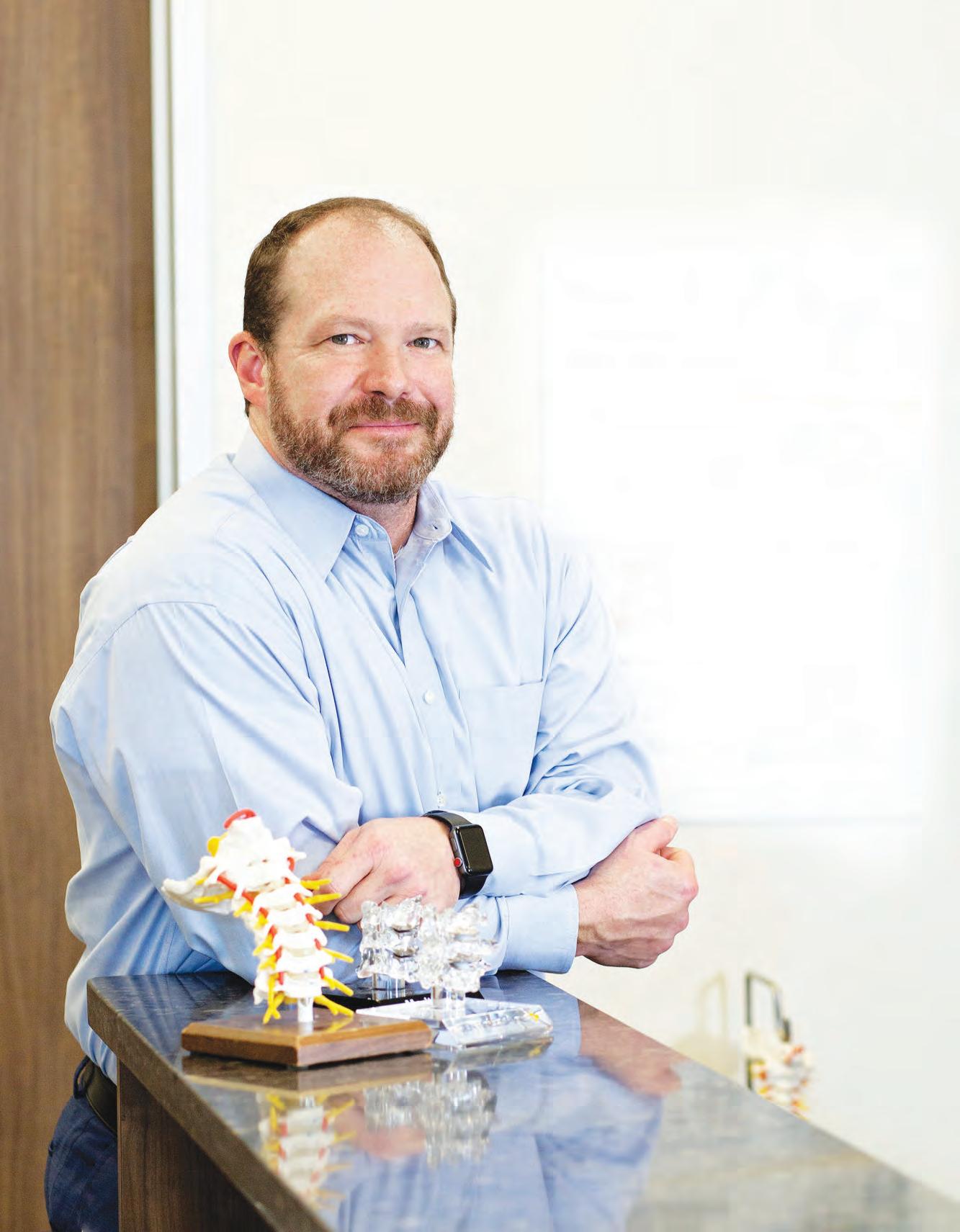


ultitalented Stefani Joanne Angelina Germanotta is one of the most celebrated artists on the planet whose full name you’ve probably never heard. Yet, unless you’ve been living offthe grid for the last 15 years, it’s guaranteed you’ll instantly recognize her iconic face.
Better known as Lady Gaga, a moniker inspired by the 1984 song “Radio Ga Ga” by Queen, Germanotta’s explosive ascent to superstardom was fast and furious, with a longevity that shows no signs of waning.
Using “David Bowie’s amphibious glam, Madonna’s blond ambition, Michael Jackson’s dual love of sparkles and precision” as her creative muses, Gaga’s forged her own amorphous persona that consistently connects with enamored fans and leaves them wanting more.
Each iteration of Gaga is arguably better than the last. Her recent turn portraying Patrizia Reggiani, an Italian socialite who was convicted of hiring a hitman to kill her former husband, Maurizio Gucci, an example. The film House of Gucci is Gaga’s latest high-profile coup—just one in a long list of accomplishments that have garnered numerous awards and accolades.
It was as a singer songwriter that Gaga fist entranced audiences in 2008 with her debut studio album, Th Fame. With the ubiquitous hits “Just Dance” and “Poker Face,” it was an album that defied the year, if not the decade. She followed it up with the Born This Way album. The title song was number one in over 25 countries, with the single selling more than 10.49 million copies, making it among the best-selling songs of all time.
“It’s like open heart surgery to do a record. You have to dig deeper and deeper. It’s painful, and then when it’s over you’re healed again,” Gaga told Home Business of developing an album from start to finsh.
Yet dig deeper the 36 year old does, each of her succeeding albums a distinct departure from the last. From dance beats to electronic rock to jazz, she craftsall her albums with a defthand and impressive lyrical range, each encompassing a different sound and feel.
“She learned to play piano by ear at home when she was really young,” Gaga’s mother Cynthia Germanotta told In Style. “One day I said, ‘Do you want to take some lessons?’ She was a little bit confused by that because she said that she heard the music in her head. She didn’t understand why she had to take a lesson. That was a definig moment because I knew there was something different about her at that point. I didn’t know what it would lead to, but I realized that there was something more there.”
While her parents supported the raw talent they recognized in their daughter, her antics on stage initially gave them pause.
“When Gaga started emerging, when she was performing, I think it was at Joe’s Pub downtown, and she was in her bikini performing with Lady Starlight, and decided that night to do heavy metal and to actually light hairspray on fie,” Cynthia told Oprah. “Some people leftwhen that happened, a lot of people stayed and thought it was cool. Her father and I were like—honestly, he said, ‘I think she has a screw loose.”
Perhaps then it was no surprise after extraordinary musical success that Gaga would turn her sights to acting, something she had wanted to do since childhood.
Indulging their talented daughter with method-acting classes at the Lee Strasberg Theatre & Film Institute at NYU’s Tisch School of Arts when she was 12 signaled the things to come. “I loved it so
much,” said Gaga to Vogue’s Jonathan Van Meter. “But I was terrible at auditioning—I would get too nervous and just couldn’t be myself.”
Fast forward to 2015, when she took on a leading role in the miniseries American Horror Story: Hotel. Her portrayal of a vampiric, selfstyled Countess, a bloodsucking fashionista, earned Gaga a Golden Globe Award for Best Actress. She followed it up with another winning turn in the 2018 critically acclaimed film A Star is Born, playing Ally, a young singer who’s discovered by an alcoholic musician.
Although Gaga came close to winning an Oscar for the performance, she didn’t leave empty handed. She took home an Oscar for Best Original Song for “Shallow,” making her the fist woman in history to win an Academy Award, Golden Globe Award, Grammy Award, and BAFTA Award in a single year.
Taking on the role of Patrizia Reggiani in House of Gucci, struck Gaga as the ideal next step. “What if I didn’t play some edgy, sexy, chancy, risky b*tch?” she recalled during the interview with Van Meter. “Some punky Italian gold digger?”
“I mean, I’m Italian-American, I come from a long lineage of Italians. And Italians are passionate, vibrant people. To Americans, who might go to Rome and hear women yelling in the piazza at each other, they would hear them as yelling when they’re simply just speaking to each other.”
To prepare for the role, Gaga spent a year and a half living as Reggiani in Italy, speaking with an accent for nine months—on and off camera. “Off amera, I never broke. I stayed with her.”
While she didn’t want to glorify somebody who would commit murder, Gaga approached the role from a unique perspective. “I hope women will watch this and remind themselves to think twice about the fact that hurt people hurt people. And it’s dangerous. What happens to somebody when they’re pushed over the edge?”


 GAGA STARRING IN A STAR IS BORN
PHOTO BY WARNER BROS.
GAGA WON HER FIRST ACTING AWARD FOR HOUSE OF GUCCI.
PHOTO BY METRO GOLDWYN MAYER
STARRING WITH KATHY BATES IN AMERICAN HORROR STORY.
PHOTO BY FX NETWORKS
GAGA STARRING IN A STAR IS BORN
PHOTO BY WARNER BROS.
GAGA WON HER FIRST ACTING AWARD FOR HOUSE OF GUCCI.
PHOTO BY METRO GOLDWYN MAYER
STARRING WITH KATHY BATES IN AMERICAN HORROR STORY.
PHOTO BY FX NETWORKS
Gaga knows a thing or two about being pushed to the edge. Before she became a household name, she was raped at 19 by a music producer. She didn’t tell anyone for years until she revealed in a 2016 Today interview that she suffers from PTSD stemming from the assault.
“For me, with my mental-health issues, half of the battle in the beginning was, I felt like I was lying to the world because I was feeling so much pain but nobody knew. So that’s why I came out and said that I have PTSD, because I don’t want to hide away more than I already have to,” she explained to Vogue
To further confront the issue, she co-founded the Born Ths Way Foundation, with her mother to support the mental health of young people. According to the foundation’s website, through high-impact programming, youth-led conversations, and strategic, cross-sectoral partnerships, the organization aims to make kindness cool, validate the emotions of young people, and eliminate the stigma surrounding mental health.
Starting the foundation and singing at Joe Biden’s inauguration are among
It’s like open heart surgery to do a record. You have to dig deeper and deeper. It’s painful, and then when

 ACTING IN BRADLEY COOPER’S REMAKE OF A STAR IS BORN
PHOTO BY ENTERTAINMENT WEEKLY
ACTING IN BRADLEY COOPER’S REMAKE OF A STAR IS BORN
PHOTO BY ENTERTAINMENT WEEKLY


Pain Management • Sports Medicine • General Surgery
Spine Surgery • Orthopedic Surgery • Neurosurgery
Minimally Invasive Spine Surgery • Total Joint Surgery
Foot & Ankle Surgery • Hand Surgery
Gynecological Surgery • Plastic Surgery













Southwest Foot & Ankle Center is a respected group of board certified foot and ankle surgeons. They are fellow trained surgeons, and board certified in wound care and reconstructive surgery. All physicians have also completed an intense residency and fellowship in the area of limb salvage, and foot and ankle surgery. The team at Southwest Foot & Ankle Center strive to make each patient’s experience personable. Our outcomes are of perfection and meticulous in surgery. As a result, patients from all over the country seek to be treated by DFW Wound Care Center.
Foot and Ankle Surgery
Bunion and Hammer Toe Correction
MIS—Minimally Invasive Surgery
Heel Pain (Plantar Fasciitis) Stem Cell Therapy
Neuropathy

Ingrown Toenails Tarsal Tunnel Syndrome Diabetic Foot Care Flat Feet Trauma Wound Care
Custom Orthotics & Braces
Laser Therapy for Pain, Swelling, Arthritis, and Wounds PLANO CLINIC 5804 Coit Rd., Ste. 100 Plano, TX 75023
LEWISVILLE CLINIC 502 N. Valley Pkwy., #2 Lewisville, TX 750067
CLINIC 714 N. Hampton Rd. De Soto, TX 75115



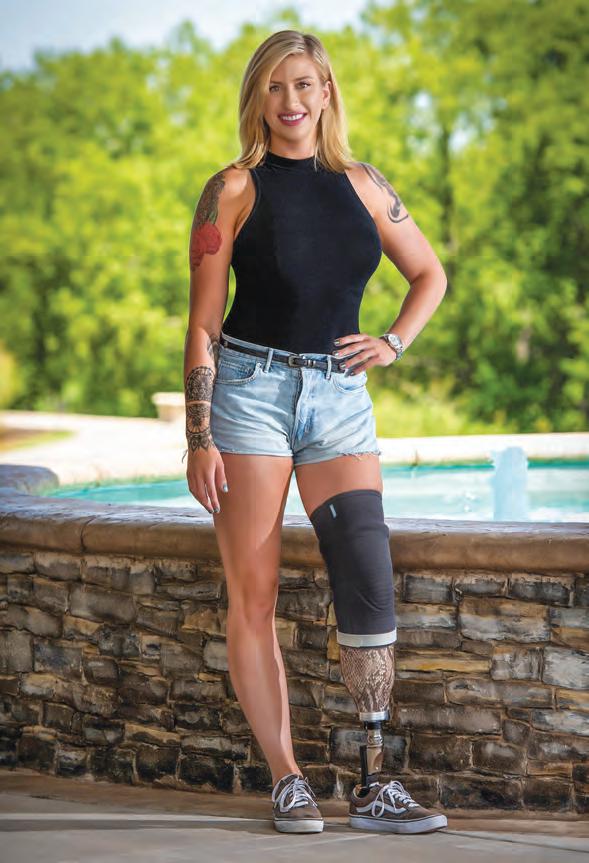



Recognized by U.S. News and World Report as Best Nursing Home and Short-Term Rehabilitation Facility.


Amenities:
Experience The Cantex Advantage
Cantex Continuing Care Network has been performing the highest standards of transitional healthcare and long-term residential services for more than 30 years. Ask anyone who knows. Cantex stands for quality.

• Private and semi-private studios, some with kitchen elements and/or Frenchdoor courtyard patios
• Flat-Screen televisions
• 32 channels of satellite television service
• Wi-Fi internet access
• Electric beds for easy comfort adjustments
• Living room with fireplace and player piano
• Library with computer stations and complimentary internet access
• Chapel
• Neighborhood cafes with complimentary premium beverages and snacks
• Restaurant-Style dining room
• Beauty/barber shop with full-time beautician
• Activity program with community outings
• Sedan and van for resident transportation



Clinical Services:
• Around-the-clock skilled nursing
• Physical, Occupational, and Speech Therapies
• Wound Management
• Intravenous Therapy
• Tracheotomy Care
• Physician Services
• Medication Administration
• Enteral/Parenteral Therapy
• X-Ray Services
• Laboratory Services



As we get older, the risk of developing dementia increases. According to the Alzheimer’s Association, 1 in 6 adults over the age of 65 will develop dementia, and this number rises to one in three people over the age of 85. Despite these sobering statistics, there is some evidence that cataract treatment may help reduce the risk of dementia.
Keep reading to learn how our team at Key-Whitman Eye Center can help treat your cataracts, protect your vision, and perhaps even reduce your risks of dementia and other diseases.

Cataracts are a common condition that affect millions of Americans. They occur when the eye's lens becomes clouded, and, making it diffiult to see clearly. Cataracts often develop slowly and painlessly, and they can eventually lead to blindness if left utreated.
While cataracts are most commonly associated with aging, they can also be caused by other factors such as exposure to ultraviolet (UV) light, smoking, and diabetes. Trauma to the eye is another cause of cataracts.
Dementia affects nearly fiy million people worldwide, and there are currently no effective treatments for the condition. However, recent research has shown that there may be a link between untreated cataracts and dementia. A recent study supported by the National Institute on Aging and published in JAMA Internal Medicine found that people with cataracts were more likely to develop dementia than those without cataracts. In another study also published this year in JAMA found that people who had surgery to remove their cataracts were less likely to develop dementia than those who did not have surgery.
While the exact relationship between cataracts and dementia is not yet known, it is possible that treating cataracts may help reduce the risk of dementia. If you are 65 or over and have cataracts, you should talk to your eye doctor about treatment options.
Cataract surgery is one of the most performed surgeries with over 4 million procedures performed in the United States every year and
over 28 million all over the world. They are treated by removing the cloudy lens and replacing it with an intraocular lens implant. Surgery to remove cataracts is a safe and straightforward procedure which is usually performed in an out-patient surgery facility.
Other than the traditional monofocal intraocular lens with one focal point usually to correct distance, there are many elective options available including high technology lenses used to replace the cataract and reduce or eliminate the need for corrective glasses or contact lenses afterwards. These include the new Light Adjustable Lens by RxSight which allows the patient to choose their fial outcome by changing the power in the lens after surgery and the patient’s choice of power is fialized in the “lock-in” adjustment. Additionally, there are lenses with multi-focal focus points, trifocal lenses and extended depth of focus lenses which each come in an option to treat astigmatism as well. Depending on several factors including dilated pupil size, your surgeon may also opt to use the femtosecond laser to perform some of the most delicate portions of the surgery even further improving the safety and accuracy of the surgery.
If you are noticing changes in your vision, talk to your doctor about all the treatment options available to you. Keep in mind, cataract surgery is a safe and effective way to improve your vision, and as the studies indicate, it may also help reduce your risk of dementia.
Contact Key-Whitman Eye Center today to schedule your eye exam and learn more about your cataract treatment options at one of our 9 office cations throughout the Dallas/Ft. Worth metroplex.


Chian-Huey (Amy) Hong MD
The ophthalmic staffmember of Key-Whitman, Amy Hong, is proficiet in all aspects of general ophthalmology. While she is able to perform various ophthalmology procedures, Dr. Hong focuses her practice on cataract and refractive surgery. She medically manages glaucoma, offering treatments such as MIGS (minimally invasive glaucoma devices) and laser therapy. Additionally, she treats conditions such as dry eye, monitors for diabetic eye disease and other conditions that affect her adult patients.
Prior to joining Key-Whitman Eye Center, Dr. Hong attended Columbia University graduating with a double major earning her Bachelor of Arts in Pre-Med and Economics. She went on to obtain her medical degree from the University of Texas in Dallas. Shortly after, Dr. Hong completed a glaucoma fellowship and her residency at Tulane School of Medicine in New Orleans.
Ronald M. Barke, MD
Dr. Barke was born and raised in Los Angeles, California and has been in practice in Arlington since 1995. He completed his training at the UT/Southwestern Medical Center in Dallas where he presently is a clinical assistant professor and teaches in the resident training program. He is a dedicated surgeon specializing in cataract and refractive surgery and is certifid by the American Board of Ophthalmology.
Dr. Barke has performed thousands of cataract and refractive surgery procedures and presently performs the “state-of-the-art” no stitch cataract surgery. He also offers the toric IOL implant for astigmatism and multifocal IOL implants for patients who desire to reduce their dependency on reading glasses after cataract surgery.

• Comprehensive Adult Eye Care
• Light Adjustable Lens, Synergy™, Symfony®, PanOptix, Vivity®, and the Toric IOL
• Management of Glaucoma & Corneal Disease
• Eyelid Surgery & Botox®
• Laser Vision Correction
Give us a call today 817-460-2272 or Toll-Free 800-442-5330 www.keywhitman.com
Convenient locations to serve you in Dallas, Plano, Richardson, Mesquite, Frisco, Arlington, Rockwall and North Fort Worth.
us on



When orthopedic pain slows you down and makes everyday movement a challenge, call the experts at Orthopedic Institute of North Texas. Our surgeons provide a comprehensive array of solutions designed to resolve your pain.
Our approach is simple
Our patients are our top priority. We carefully review your options, explain your treatment, and the prospects for a return to full mobility. You will be fully informed at every step of your treatment.
Our experts are available 24/7
During diagnosis, treatment and recovery, any questions or concerns you have will be answered. We speak in terms you can understand, and discuss every step of your care to ensure you feel comfortable and confident with the recommended treatment plan.
Our promise to you
Using advanced, proven medical techniques, the surgeons at Orthopedic Institute of North Texas will return you to the freedom of mobility you enjoyed before.
Don’t spend one more day in pain. Call 972-591-6468 today and get gardening again.

Education:
Medical School:
Thomas Jefferson University, Philadelphia, PA
Residency:
University of Florida Health, Gainesville, FL
Fellowship:
Adult Reconstruction, University of Florida Health, Gainesville, FL
Memberships:
• American Academy of Orthopedic Surgeons
• American Association of Hip and Knee Surgeons

Dr. Dibra is one of

Dr. Dibra possesses an extensive knowledge of hip and knee orthopedics. He treats operative and nonoperative hip and knee arthritis. Dr. Dibra is nationally renowned for his muscle-sparing robotically-assisted knee replacement with a nationwide clientele. In addition, he specializes in minimally-invasive anterior hip replacement, partial knee replacement, and complex revision hip and knee replacement. Dr. Dibra has an extensive research background and numerous publications, book chapters, and national presentations. He has received numerous awards and accolades for his contributions in research.
Dr. Dibra’s family consists of his wife and two children. In addition to English, he is fluent in Albanian and Italian, and proficient in Spanish. When he is not working, he enjoys spending time with his family, playing soccer, traveling, and cooking. Dr. Dibra is currently welcoming new patients and accepts most insurance plans.
Dear Olivia,
There are many emotions that come along with deciding to put a family member on hospice, and then even more at a loved one’s passing. We have had a few family members who were on hospice in their final days, and we are not sure what resources are available to families such as ours. We would like information about resources that are available to cope with these difficult times.
Dear Living with Loss,
The grief and loss experience is unique for each individual impacted by someone’s passing away, but no one should go through the grief process alone. At the Visiting Nurse Association, we have licensed social workers, chaplains, and counselors available to help families navigate the grief and loss process. We have a quarterly bereavement

newsletter called Sharing the Journey, as well as other resource information on our website (see QR code). Our bereavement coordinators help families process the changes that come with loss, and they can offer additional community support resources as well, which are also listed on the VNA website, vnatexas.org. Please reach out and let us know if we can help during these challenging times.
~OliviaCoping with change and loss




Dr. Courtney is a board-certified orthopedic spine surgeon located in Plano, Texas. A Louisiana native, he attended Louisiana State University for medical school, and completed residency at Texas A&M followed by a fellowship at the Florida Neck and Back Institute.
SPECIALTIES:
• Back Pain
• Neck Pain
• Spine Pain
• Disc Replacement
• Microdiscectomy
• Spinal Fusion
• Minimally Invasive Surgery
• Steroid Injections
• Physical Therapy
“I







Those of you inching closer to retirement are probably wondering how your golden years will work from a fiancial standpoint. Ths is a natural curiosity, as you will one day need to replicate your income from your savings and other sources. While this might sound like a daunting task, it’s actually pretty simple to illustrate. I think that the advisory and planning industry provides too much detail around the topic and it might be explained in a way
that is confusing or downright scary. I’ll attempt to alleviate those feelings as we walk through a simple example. Most of you probably have a good handle on your income sources and expenses. The goal now is to figue out your known sources of income. Typical sources:
• Social Security
• Employer Pension
• Rental Property
These are all hypothetical numbers for illustrative purposes
Social Security (spouses combined): $4,000 mo................................$48,000 yr Pension: $5,000 mo................................$60,000 yr
Rental Property (net of expenses): $1,500 mo................................$18,000 yr
Sub-Total: $10,500 mo............................$126,000 yr
Now, let’s add-in the effects of $1,000,000 in investible money from all accounts. Let’s assume the income producing stocks and bonds in the portfolio throws off 2.5% er year.
Then we need to figue out variable income from all your investment accounts; IRAs, Individual Accounts, Joint Accounts, 401ks, etc. These accounts will be invested and will be throwing offincome from the investments you own, plus appreciation (over time). Ths income can be added to all of your known sources, and voila, you have your retirement income plan. To give you more peace of mind, let’s plug in some numbers:
$1,000,000 @ 2.5%.............................................................$25,000
Total…………………………………..………………$151,000*
“Ths is all well and good, but I need more income.” I get this request pretty often, so there’s more that one can harvest from their investment accounts to get that extra income. Let’s use the same example as the couple with the $1 million in investible accounts. Let’s say they need $50,000 per year (5%) from the aggregate of all their accounts. Well, as shown above, half of it (2.5%) is already coming in from dividends and bond coupons, so where does the other 2.5% come from. The answer is the appreciation of the portfolio. That’s right, at the end of the day you are indifferent from getting $50,000 a year in dividends vs. selling $50,000 worth of your investments.** It’s all just money! Ths is a concept called total return. It’s your investment income + the appreciation over time.
You might be saying to yourself, “Well, that seems like I’m digging into principal, and I am not comfortable with that.” I get this question by virtually every client, and here’s my simple answer. As long as your total return, over time, is in excess of your withdrawals, your principal will continue to grow over time.
The next natural question (and I’ll spare you from having to ask) is how does this work in a recession and a bear market? It’s a fair question and one that deserves an answer. Given that the duration of market cycles can vary, and trying to predict the next big downturn is a fool’s errand, it’s always good to have a cash cushion that makes a person comfortable. Perhaps one to two years’ worth of cash needs should be kept in a money market? When the market takes that big dip, you can now draw from your cushion without having to sell anything during the down period. Once the market comes back, you replenish the cash you have taken out by selectively selling when things have rebounded. The specificsof how your portfolio should be allocated is an exercise that all clients should have with their advisor.
The essence of a plan is showing a person how to get income by pulling various levers at various times. There really isn’t much more to it than that. Where the artistry comes into play is helping a client figue out when it’s best to pull each lever. For example, should I take social security as early as I can or should I defer? Should I start taking distributions from my IRA now, or wait until age 72 when the Required Minimum Distribution kicks in?
All of these variables can be worked out when talking to a client and running scenarios. Sure, there could always be some one-offsalong the way. Perhaps you want to sell a rental property, or you might be getting an inheritance. All of these can be accounted for and baked into your income plan when they occur. Again, putting together the plan is not the hard part, but it’s the execution of the plan by your advisor that is the hardest part. You might need your portfolio to deliver income over a 20- to 30-year horizon, and in those multiple decades there will be some crazy times in the market where a seasoned investment manager can truly add value. It might behoove a person to look for the most qualifid manager fist, then figue out the income plan, not the reverse. Why? Some advisors lead with the fiancial planning angle as the most important part, build you the plan, and then try to sell you products for the plan or outsource the management to a third party. They might be great with numbers and spreadsheets, but can they manage money in an ever-changing market? Ths is one of the most important questions you need to ask yourself while you’re evaluating an advisor.
“EverybodyHasaPlanUntilThey Get Punched in the Mouth”MIKE TYSON
*This is a pre-tax amount
**There could be different tax treatments for IRA withdrawals, dividend payments, and capital gains.
Hodges Capital Management, Inc. is a Federally Registered Investment Advisory Firm registered with the SEC. The above discussion is not intended to be a forecast of future events, a guarantee of future results, and should not be considered a recommendation to buy or sell any security. Past performance is not indicative of future results. Investing involves risk. Principal loss is possible. Investing in smaller companies involves additional risks such as limited liquidity and greater volatility. No current or prospective client should assume that information referenced in this communication is a recommendation to buy or sell any security. Different types of investments involve varying degrees of risk. No client or prospective client should assume that any information provided is a substitute for personalized individual advice from the adviser or any other investment professional. This document was created for informational purposes only and the opinions expressed are solely those of Hodges Capital Management, Inc.
All data and information reference herein are from sources believed to be reliable. Any opinions, news, research, analyses, prices, or other information contained in this research is provided as general market commentary, it does not constitute investment advice. Hodges Capital Management shall not in any way be liable for claims and make no expressed or implied representations or warranties as to the accuracy or completeness of the data and other information, or for statements or errors contained in or omissions from the obtained data and information referenced herein. The data and information are provided as of the date referenced. Such data and information are subject to change without notice.

Despite the light at the end of the tunnel from the COVID-19 pandemic now in sight, many companies and individuals will continue to work from home until a sufficit percentage of the population is immunized to reach herd immunity. Fortunately, working from home offers many benefits to employers and employees alike, especially with new technology that makes it easier than ever. In fact, a growing number of companies were already heading in the direction of remote work before the coronavirus outbreak. Now, the pandemic may have served as a catalyst to expedite the growth of this trend even after the COVID-19 threat is over.
In addition, countless people have lost their jobs as a direct result of the pandemic. So many are now seeking work-from-home opportunities through self-employment or side gigs.
While for some, working from home is a dream come true, for others, telecommuting has its drawbacks and is a big adjustment. Many fid it challenging to get motivated, struggle with time management, self-management, and productivity, and fid it easy to slack off. If you are struggling, the following strategies utilized by many successful entrepreneurs can help you stay on track while working from home.
Everyone's work-from-home situation is different. So think about your situation and individual needs. Some questions to consider are:
1. What is your home environment like?
• Is it loud or quiet?
• Do you have sufficit workspace?
2. What does working from home look like?
• Do you have flexble or structured hours?
• Do you work with others through video calls or exclusively by yourself?
• How is your work from home measured?
3. How do you work best?
• Do you need structure or flexbility?
• Do you work better alone or with others?
• Is a commute or transition time necessary to mentally prepare you for work?
After you've thought about your work situation and what you need to be successful, fid ways to incorporate what works best for you while working from home.
If you don't already have an officor workspace, fid a way to create one. It may be tempting to work on your couch in front of the TV. But you're not likely to be focused and productive. If you're used to commuting to work, your mind and body are conditioned to work in a particular environment. If others live in your home or you don't have a designated workspace, it can be challenging to work from home. So set boundaries around your work time and space. Even if you have a home offi, you may need to make modifiations, so it meets your needs.
When setting up your work area, create a space that mimics your ideal work environment, and designate that space for work. Consider all the tools and the layout you need to do your job efficitly and fid ways to incorporate everything into your workspace. If you're used to personal comforts at work like a salt lamp, plants, or coffee machine, incorporate them into your setup at home. If you have limited space, create a 'workspace in a box.' Store everything you need together in a box so you can set up quickly and easily on any surface. Then take it down at the end of your workday.
If you usually work away from home, you're probably accustomed to a transition between home and work life. For example, you get dressed, eat breakfast, drink coffee, then commute to work. At the end of the day, you travel home, perhaps listening to the radio to wind down before you arrive. Ths helps to shiftbetween work mode and relaxing at home. When working from home, however, these boundaries are often blurred. So you may need to fid ways to differentiate between work time and personal time. Otherwise, it's easy to fall into the trap of never being entirely focused on work or relaxation, leaving you feeling unsatisfid in both areas.
Come up with a routine that closely mimics your regular workday. Set your alarm rather than sleeping in and get dressed rather than lingering in your pajamas. Ths will also make it easier to transition back to your place of employment when the time comes.
Also, do a commuting activity. If you usually listen to a podcast in the car or read a book on the train, do the same thing for a set amount of time before beginning your workday. Or go for a walk in your neighborhood (being mindful of social distancing).

Productivity and self-management can be more difficult when working from home. So set small, achievable goals based either on amounts of time or accomplishing specifictasks. Create a chart so you can visualize your goals and mark offitems as you complete them so you can see your progress and feel you've accomplished something.
Also, reward yourself and give your brain a rest with breaks. Breaks are healthy and necessary, so use them to reset and recharge. Stand up, get in some light activity, and do something fun. Try not to use this time to accomplish things around the house that you don't enjoy. Also, avoid social media and the news as much as possible as they can increase anxiety and stress. Set a timer for your break, so you don't lose track of time. Then use a mini transition to get back into work mode.
It can be challenging to communicate with your managers, employees, or coworkers when working from home. You may be used to walking over to someone to ask questions or troubleshoot a problem. When
usual communication patterns are interrupted, there's also room for misinterpretation and misunderstandings. When communicating by email or phone, keep communication clear and concise. Remember that tone and meaning can be difficult to convey over text, email, and even video conferencing. If something comes across in a way you wouldn't expect, assume the other person has good intentions, and if needed, ask for clarifiation and check for understanding.
In addition to work-related conversation, it may be helpful to keep up social communication with your coworkers. Social interaction with coworkers may be part of what makes work enjoyable to you. If you usually chat with coworkers during breaks, eat lunch together, or go out after work, incorporate a video call into your lunch break from home. Ths can also help keep you sane and improve your mood during these chaotic times by creating balance and a sense of normalcy.
Finally, remember, that this is a time of transition and new experiences. It'll take time and experimentation to discover how to make working remotely work best for you. So go gentle on yourself and others while learning how to do your job in a whole new way.
The neck is an essential part of the human body for function and sustaining life. In addition to holding the head upright, it serves as a major passage for blood vessels and nerves as well as gastrointestinal and respiratory organs that help provide equilibrium between the various systems of the body. The neck moves by pivoting, bending (forward, laterally), and extending. Because the vertebral struc tures are smaller and have increased range of motion, they are at increased vulnerability to injury, especially if not cared for properly.
Many muscles and ligaments cross the neck to optimize stability. The vertebrae of the neck, seven in all, are cushioned by intervertebral discs which further enhance the structural integrity of the neck. The discs act to absorb forces placed on the spine and help prevent injury. The spinal column runs vertically and houses the spinal cord. The nerves of the spinal cord branch out at each vertebral level to provide sensory and motor input. These systems foster muscle contraction as well as feedback from our external environment back to the brain. The neck is truly an amazing part of the body!

Disorders of the neck can hinder function and quality of life. In fact, muscle tension is often carried in the muscles that cross the neck and upper back. Stress is a contributing factor to conditions such as headache and painful trigger points. Trigger points are discrete, hyperirritable, and focal points in skeletal muscle that typically lead to pain.
Postural abnormalities occur often when excessive forward momentum is placed through the cervical vertebrae and related structures. Specifially, with forward head posturing, the upper portion of the neck is positioned in such a way as to limit normal rotation of the fist cervical vertebra on the second. Ths, in turn places increased demands on the mid- to lower level of the neck and can lead to spinal instability, degenerative changes, and elevated neck discomfort.
Other symptomatic neck conditions include osteoarthritis, disc protrusion, and disc degermation. As part of emphasizing good care of the neck, appropriate posture and body mechanics are essential. Maintaining alignment of the neck and back helps minimize strain on the muscles, ligaments, joints, and nerves. For example, an individual who works at a computer for prolonged periods of time, needs intentional and scheduled breaks. The setup of the workstation should also be considered. For instance, are the hips and knees aligned at 90 degrees when seated in the chair? Are the elbows also at 90 degrees? Is appropriate eyewear being utilized (if needed)? Is there appropriate lighting? These are all important questions to consider in limit-
ing the risk of strain or injury of the neck. The neck can be exercised by addressing strength as well as flexbility. Typically, the neck can be strengthened by actively moving the neck through the normal planes of movement (up/down, rotation, ear to shoulder) and with some form of resistance applied. Stretches are important for maintaining or enhancing range of motion and limiting the likelihood of muscle tension and headaches. Equally as important are maintaining appropriate durations of rest as well as dietary and hydration intake
Whether addressing new onset of pain or chronic symptoms of the neck, an exercise program is important for helping to reduce symptoms and enhance quality of life. Author Matt Bonander is the author of Author of Exercise, Health and Vitality A Concise, Science-Based Guide for Adults and Older Adults which can be found on Amazon.

Author Matt Bonander is the author of Exercise, Health and Vitality A Concise, Science-Based Guide for Adults and Older Adults which can be found on Amazon.


Dr. Birenbaum founded the Arlington Cancer Treatment Center in 1981. He founded the Texas Hematology/Oncology Center, PA in 1997. He is the founder, Medical Director, and CEO. Dr. Birenbaum trained at The University of Texas M.D. Anderson Cancer Institute for 5 years, 3 years as a Hematology/Oncology fellow and 2 years as a facility professor. His private practice in Hematology/Oncology has been in the Dallas/Fort Worth area since 1979. Dr. Birenbaum is available by cell phone 24/7 and participates in many support groups and radio programs.
AREAS OF CLINICAL INTEREST:
• Gastrointestinal Tumors
• Melanoma, Sarcoma
• Breast Cancer
• Lymphoma
• Kidney Cancer
EDUCATION AND TRAINING CREDENTIALS:
• Southern Methodist University
• Universidad Autonoma de Guadalajara/University of Michigan
• Straight Medical Internship - Henry Ford Hospital/University of Michigan
• Straight Medicine Residency - Tulane University Medical Center/Ochsner Clinic
• Fellowship Hematology/Oncology - University of Texas M.D. Anderson Hospital and Tumor Institute
• Private Practice 1979 to Present
PERSONAL INTERESTS:
• Born and raised in Dallas, TX
• Father of 2 sons
• Owns six dogs
• Loves traveling and golf
• Avid collector of arts and antiques
Dennis Birenbaum, MD and Dr. Wyszynski, MD, DO are M.D. Anderson trained hematologists/oncologists.
Dr. Wyszynski, MD, DO also trained at Fox Chase Cancer Center in Philadelphia, PA.
Dr. Wyszynski joins the Texas Hematology and Oncology Centers after many years of successful private medical practice in the Dallas/Fort Worth area. Dr. Wyszynski completed his internship and residency at John F. Kennedy Memorial Hospital in Stanford, New Jersey. He followed these with a number of Fellowships including one in Hematology/Oncology at the prestigious M.D. Anderson Cancer Center in Houston, TX, and two years at Fox Chase Cancer Center in Philadelphia, PA. Dr. Wysznski is well known for his quality of care and the personal interest he takes in his patients. He is very active in many professional societies and investigative trials.
BOARD CERTIFICATIONS:
• American Osteopathic Board of Internal Medicine: Hematology/
• Oncology-Certified: 8/24/2007
• American Osteopathic Board of Internal Medicine
PROFESSIONAL SOCIETIES:
• American Osteopathic Association
• ASCO
• Texas Medical Association
• Dallas County Medical Association
CLINICAL CANCER INVESTIGATIVE TRIALS:
• Central Pennsylvania Oncology Group Protocal
• Eastern Cooperative Group
• Southwest Oncology Group
PERSONAL INTERESTS:
• Married and father of 2 children
• Enjoys traveling and spending time with family
• Active in many hobbies
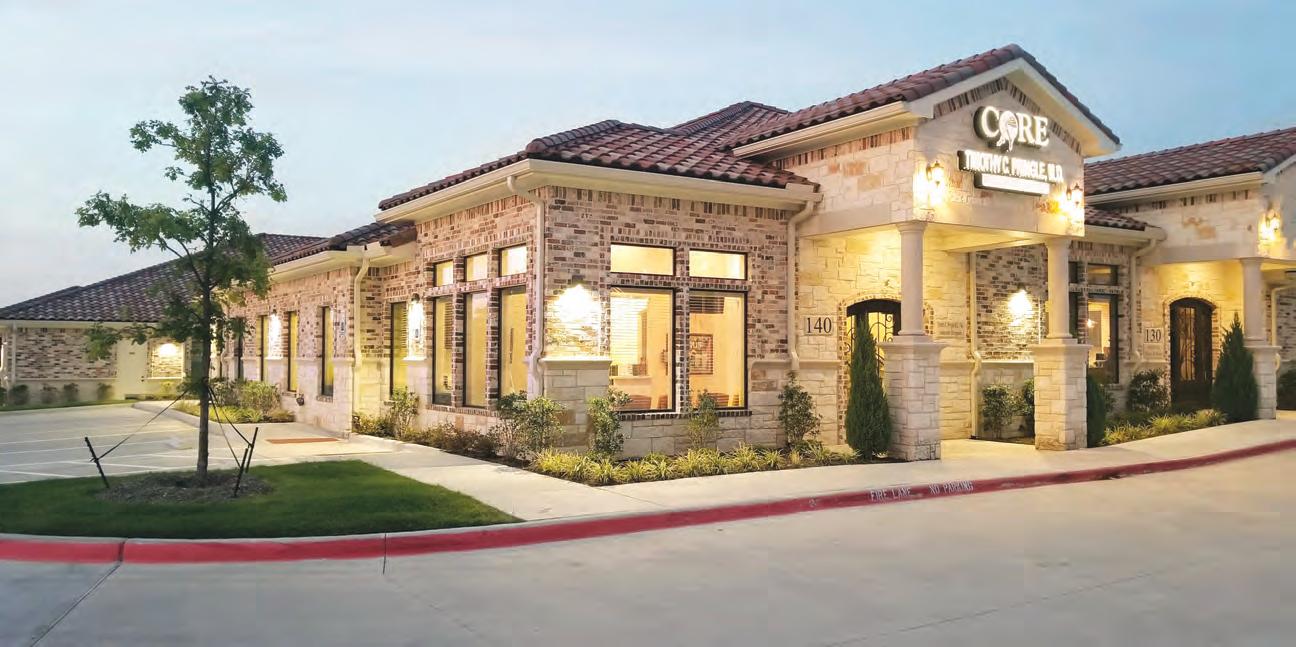
Dr. Timothy Pringle is a board-certified endovascular surgeon. He specializes in minimally invasive techniques to address all aspects of vascular disease. He is knowledgeable and experienced with management of venous insufficiency and peripheral arterial disease. Dr. Pringle predominately treats venous insufficiency in his office with laser procedures. His philosophy is, “Interventions improve quality of life, but lifestyle change improves lifespan.” Dr. Pringle understands true healing comes from an integrative approach to vascular disease. He provides in-office surveillance through ultrasound testing. Dr. Pringle is the rare combination of a caring, kind, and compassionate physician who loves God, family, and his patients.



Rahul Banerjee, MD is a board-certified, fellowship-trained orthopaedic surgeon who specializes in hip and knee replacement, comprehensive management of fractures, and treatment of complex orthopaedic problems. Dr. Banerjee graduated from the University of Chicago Pritzker School of Medicine and completed his residency and fellowship at Brown University.

After training, Dr. Banerjee served in the United States Air Force and worked with the Army treating the injured and training residents in El Paso, TX. He was deployed to the War in Iraq and treated many soldiers and civilians.
After his military service, Dr. Banerjee joined the faculty at University of Texas Southwestern as Assistant Clinical Professor. In 2021, Dr. Banerjee joined North Texas and Orthopaedic Spine. Dr. Banerjee is available to see patients at office locations in Plano, Carrollton and Dallas.
• Total Hip Replacement
• Direct Anterior Hip Replacement
• Knee Replacement
• Treatment of Fractures
• Bone Deformity
• Nonunion of Fractures
• Limb Lengthening
• Elbow Injuries / Elbow Replacement
• Foot and Ankle Injuries
• Infections
• Total Hip Revision
• Total Knee Revision
“From the moment I met Dr. Banerjee, he listened to what I had to say and how I felt, that means a lot to me. After many years of knee pain and not being able to live the lifestyle I wanted, he agreed to do a total knee replacement. It was the best decision I ever made. He did an amazing job! Less than two months out and I am walking and biking like I haven’t been able to in years! It really changed my life!!!”
–David P.
LAW FOR SENIOR ADULTS & THEIR FAMILIES


Elder Law is first and foremost about empowering seniors. Elder Law services help you address issues of living arrangements, financial well-being, healthcare options, and the ultimate disposition of assets, enabling you to make your own choices and decisions about managing life as you age.

PROBATE LITIGATION ESTATE PLANNING WILLS & TRUSTS
On August 14, 1935, on the heels of the Great Depression, President Franklin D. Roosevelt signed the Social Security Act into law, creating a “social insurance” program to pay workers 65 and older a continuing income after retirement. After almost a century, Social Security remains an integral part of the retirement plan of almost every American worker.
Social Security retirement benefits are individualized: the amount you receive depends on the amount you paid while working and the age you begin receiving benefits. When you work and pay Social Security taxes, you earn credits toward Social Security benefits. Individuals need 40 credits (10 years of work) to qualify for retirement benefits.
The amount of the retirement benefit depends on the amount you earned and paid in Social Security taxes while working and is subject to an annual cost-of-living adjustment. In 2022, retirement benefits increased 5.9%, which was the largest increase in nearly four decades. Full retirement age was 65 for many years, but began increasing monthly in 2000, and for anyone born in 1960 or later, full retirement age will be 67. Individuals who elect to receive their retirement benefits before full retirement age receive reduced monthly benefits.
If you have not worked and earned sufficit Social Security credits to qualify for your own retirement benefits, but are married or were married for at least 10 years to a worker who contributed, you may still qualify for spousal benefits. To qualify for spousal benefits, you must be at least 62 years old (60 if widowed) or caring for a child entitled to receive benefits on your spouse’s record (younger than 16 or disabled). Your full spousal benefit could be up to one-half the amount your spouse is entitled to receive at full retirement age. Additionally, even if you have enough credits to qualify for retirement benefits on your own work history, you may still apply for spousal benefits if your amount is lower than half of your spouse’s benefit.
The Social Security Administration provides a helpful online tool called the Retirement Estimator (www.ssa.gov/estimator), which provides personalized retirement benefit estimates and calculations of various scenarios to compare your options.
One aspect of retirement that has changed dramatically over the years is the fiancial impact of funding long-term care needs as life expectancy has increased. Currently, 70% of individuals turning 65 will need some form of long-term care in their remaining years. Long-term care costs range from $3,000–$16,000/month in the DFW area. Social Security was simply not designed to provide sufficit income to support such extensive costs.
Medicare was also not designed to pay for long-term care. Signed into law in 1965 by President Lyndon B. Johnson, Medicare was another type of “social insurance” designed as a basic health insurance program for all individuals 65 or older who had paid into the system. Traditional Medicare consists of two parts, Part A and Part B. Part A is funded by Medicare taxes and provides coverage for in-patient hospital care, care prescribed by a physician, and hospice. Part B requires a monthly premium and covers medically necessary services and supplies. In 2022, standard Part B premiums increased from $148.50 to $170.10 each month. The $22 increase in the Medicaid Part B premium is one of the largest increases in Medicare history, approximately half of which is to create a contingency fund for Aduhelm, a new Alzheimer’s drug whose benefits have been widely debated.
Contrary to popular belief, no Medicare program covers long-term custodial care. For example, Medicare does not pay for the cost of assisted living or memory care, and only pays for a portion of skilled nursing care following a hospital stay of at least three days. Even then, the maximum paid by Medicare for skilled nursing is a portion of 100 days of care (Medicaid Advantage plans may pay less).
As you contemplate retirement, it is important to understand fully the benefits you can expect to receive under Social Security and Medicare. It is even more important to understand the limitations of these two programs, so you can prepare adequately. Unless and until the U.S. takes the next step in providing “social insurance,” all individuals approaching retirement age should have a plan in place for funding their own longterm care needs, beyond Social Security and Medicare. For a better understanding of available planning options for funding retirement and long-term care, and to fid an Elder Law attorney in your area, go to www.naela.org. Lori A. Leu, Erin W. Peirce, and Lauren E. Olson are Elder Law attorneys with Leu & Peirce, PLLC in Plano, Texas. For more information, call 972-996-2540 or visit www.leulawfim.com.


Dr. Chambers is an orthopaedic surgeon at Texas Bone & JointArlington who specializes in joint replacement surgery. He received extensive training in joint replacement surgery during his fellowship at Harvard Medical School / Massachusetts General Hospital, which was voted as the top hospital in the United States. Dr. Chambers has implemented the techniques learned at Harvard Medical School into his own practice and offers minimally invasive total hip / knee replacement, partial knee replacement, revision surgery for malfunctioning, loose, and infected joint replacements, arthroscopic surgery of the hip and knee, and revision of failed and recalled metal-on-metal total hip replacement implants. Dr. Chambers focuses special attention on surgical techniques for rapid recovery after total joint replacement which allow his patients a more predictable and earlier return to home and an active lifestyle.
Dr. Chambers is pleased to offer the MAKOplasty Robotic-Arm Assisted partial/total knee and hip replacement. The MAKOplasty procedure is changing the way joint replacement surgeries are performed by providing each patient with a personalized surgical experience based on their specific diagnosis and unique anatomy using a CT-based 3D modeling. The robotic arm technology allows for extremely precise placement of hip/knee components with potentially less soft tissue injury than traditional joint replacement.
Dr. Chambers is a Texas native and grew up in Houston, Texas. He attended medical school at The University of Texas Medical Branch in Galveston, and completed residency at John Peter Smith Hospital in Fort Worth, Texas. He then completed a fellowship in joint replacement surgery at Harvard Medical School. In his free time, Dr. Chambers enjoys traveling with his wife, Christine, and spending time with friends and family. He is an avid sailor and enjoys participating in sailing races on the local lakes in the Dallas/ Fort Worth area.
Along-range planner has an infinte number of options for the future. What gets in the way is the stress of choosing the best one. And many times, people use uncertainty as an excuse to postpone altogether. As a whole, our society is reactive, especially when dealing with life events and emergencies. No one wakes up thinking, “Today I’m going to put a plan together just in case I need it.” People do need one, they just don’t know where to start. The following steps will help people to plan for a favorable tomorrow. Ths process mentally prepared me to live well today and into the future.
Planning is a thought process that requires mental effort free of stress. Ths is important because stress affects the ability to concentrate and to focus on the matters at hand. A few tips to mitigate stress that postpones action: Identify the signs of stress such as fideting or tense muscles. Know the situations that impact stress like fiancial or personal problems, and fially, Practice well-being activities, for example, exercise, eat healthy foods, and learn new skills. A therapist reminded me, “ The simple step of acknowledging a problem or issue positions the person for solving it.”
2. Shift Mindset from Problems to Possibilities
People are trained to focus on the problems when making decisions. But ultimately planners need to see possibilities—that’s where magic lives and where trends are born. Embracing a possibility mindset adds value to almost everything; life purpose, the community, family and friends, a supportive environment—restoring hope, in what we can do and who we are as people
Components of a Problem Focused Attitude
There’s a feeling of disempowerment in problems, a feeling that all doors are shut. When planners fixte on worries, they’re preoccupied with reducing and resolving threats, emotional distress, fears and worries, and barriers.
Components of a Possibility Mindset
Even the smallest shiftcan create exciting possibilities. Start by asking, “What’s the possibility that I see in this situation?” Ultimately, spend time on the options and positive interrelationships, insights and choices, replacing expectations with plans, collecting information, and fially, focus on what you can control.
A simple but powerful framework for leveraging strengths and rectifying weaknesses is to concentrate on what feels right. Become more self-aware and pay attention to what behaviors make you feel good
about yourself. Reflct on and pay attention to choices that expand improvement such as, What do I do well? What’s unique about me? Where do I excel?
Examples: Resourceful, adaptable, manage money well, self-directed, and resilient.
Similar to strengths, identify the weaknesses by answering: What areas in life are underperforming and why? What could improve? What resources are needed?
Examples: Low quality of life, unsatisfying friendships, poor budgeter, and unfulfilling relationships.
Quality research is doable, replicable, and based on logical rationale. It must generate new questions, and address problems. Start with provoking questions and searching for answers on the Internet and within the local community such as: What would it take to create a change in my overspending? How to get a budget under control? How to stop spending more than I earn?
Questions inform the planner. It’s the secret sauce for creating something better.
Grab a pen and pad. Pick one thing to improve—say it’s saving money.
Answer: What does it look like right now? Am I putting money away in an emergency fund and if not, why not? What do I predict will happen to my money if I don’t make any changes?
What are the variables that influence my fiances the most? Is it saving more, overspending, or not following a budget?
Describe your fiances in one, three, and five years. List the actions you’ll take. The outcome depends on the amount of control you have. Have fun with this and don’t hold back. Fifteen years ago, that’s what I did. Started small. Broadened expectations overtime. Do that and you’ll have more money!

Author Carol Marak is a native Texan who lives in Dallas. She’s the author of “Solo and Smart - The oadmap for a Supportive and Secure Future” which is based on Carol’s plan as a single adult. “Solo and Smart” can be purchased at www. Amazon.com. Her work has been featured in The New York Times, Washington Post, USA Today, PBS, NPR, AARP, USNews, local newspapers and radio shows. www.CarolMarak.com.

When you need top quality parts and service, look to Plano Power Equipment.
To keep your equipment in top shape, you can count on Plano Power Equipment’s retail pats sales and servicing of Toro®, Echo®, Scag®, equipment using genuine manufacture parts.






Experience the residential zero-turn riding mower with commercial mower features.







L TO R: TOM DALEY, * JESSICA PERRONI, * KEVIN SEGLER, * NEDA GARRETT,* RICK ROBERTSON, * JULIE CRAWFORD, * BRIAN LOUGHMILLER, * SALLY PRETORIUS, * DERON SUGG AND LAUREN HARRIS.
*BOARD CERTIFIED IN FAMILY LAW BY THE TEXAS BOARD OF LEGAL SPECIALIZATION
family law, divorce, child custody, prenuptial agreements, property division, paternity
FAMILY LAW IS NOT ONLY WHAT WE DO. IT’S ALL WE DO.
With more than thirty proven attorneys in four office across North Texas, KoonsFuller is one of the largest family law fims in Texas and the Southwest. KoonsFuller Family Law offers clients a level of legal representation and range of resources unmatched by any other family law fim. Whether your case calls for informal negotiations, mediation, collaborative law or court proceedings, KoonsFuller is equipped to handle cases of all sizes and issues and has been doing so for over 40 years. The Plano attorneys pride themselves on the compassion, skill, and thoughtfulness they bring to each case. They understand that every family is unique and every family’s concerns are different, especially when divorce, custody issues, and fiances are involved.
Working together, as a fully integrated team, there is no case too large or complex for us to manage. To learn more about KoonsFuller, visit koonsfuller.com.

RICK ROBERTSON SHAREHOLDER
Voted 2022 Top Lawyer
DALLAS (Principal Office) 1717 McKinney Ave., Ste. 1500 Dallas, TX 75202 (214) 871-2727
5700 W. Plano Pkwy., Ste. 2200 Plano, TX 75093 (972) 769-2727
DENTON
320 W. Eagle Dr., Ste. 200 Denton, TX 76201 (940) 442-6677
550 Reserve St., Ste. 450 Southlake, TX 76092 (817) 481-2710
www.koonsfuller.com
While aging is a natural part of life, it does not make the conversation any easier when we need to tell the ones we care about that it might be time to put away the keys. Having this conversation is tough, but it is in the best interest of the individual’s safety. Drivers who are 65 and older are 16% more likely to cause an accident compared to adults aged 25 to 64. There is no designated time frame for when you should tell someone they should stop driving for the sake of their safety and others, which means recognizing the right time is often leftto the caregivers or loved ones. Knowing the signs and understanding how to start the conversation can go a long way.
Seniors may face health issues that impact their ability to drive safely. Although not an exhaustive list, the health problems an older person might encounter could include bad vision, brain damage from a stroke, Dementia, or arthritis. In addition, older people tend to use more prescription drugs, which can have side effects like drowsiness, blurred vision and confusion and have negative impacts on driving.
• Over 700 older adult drivers are injured in car accidents each day and more than 20 are killed in car accidents.
• There are more than 30 million licensed drivers on the road who are 70 or older..
• Drivers aged 65-69 have the lowest number of auto insurance property damage claims, but the number of claims begins to increase at age 70.
• Drivers aged 75 and older have higher death rates from accidents versus middle-aged drivers, according to the CDC.
• Across all ages, including the senior population, male drivers are more likely to die in a car accident than female drivers.
• Failure to yield the right-of-way is one of the most common causes for fatal accidents among senior drivers.
The ability to exhibit safe driving behavior does not usually come to an immediate halt, but is typically rather a gradual process that can eventually lead to putting lives in danger. Look for the following signs if you are concerned about an older person’s ability to drive:
• Driving extremely slowly
• Not using turn signals
• Trouble making turns or properly changing lanes
• Parking outside of the lines of a space
• Failing to stop at red lights or stop signs
• Running into things and getting scrapes or dents on the car
• Not being able to see or hear what is going on outside the vehicle
• Difficulty backing up
• Delayed responses to events around them
• Needs someone else to tell them how to drive
• Frequently getting lost or forgetting their destination
• Getting confused frequently about how to handle different situations

How to talk to a family member or friend about no longer driving
Relaying your concerns to an aging friend or family member and letting them know you believe they can no longer drive safely is a difficult conversation to have, but keep these tips in mind when you do:
• Start talking about it early so there are no surprises. The sooner you bring up the topic, the smoother the outcome is likely to be for everyone. Not only does this help keep surprises to a minimum, but it develops more open communication around the topic.
• Choose who needs to initiate the conversation. You can talk with other family members and friends to fid out who would be the best person to do the talking. Bear in mind that it should be someone the older driver trusts. Another option is to ask their physician, ophthalmologist or optometrist to address the situation.
• Find a good time to talk and plan ahead. Pick a time that works for both you and the driver so you are comfortable and not rushed. Mark a date on the calendar and stick to it so you do not feel the urge to reschedule or put it off
• Provide the facts leading to the decision. Present the facts behind the decision and explain why you’ve come to it. Ths could be because of the medications they are on, their health or because of recent incidents causing alarm. Have the supporting materials ready and be familiar with them since they will provide the factual basis for getting an older driver to retire their keys.
• Be encouraging and supportive. Losing the ability to drive often feels like loss of independence. Reassure your friend or family member that this decision is for their safety, but there are also other options for them to get around.
• Offer alternative transportation suggestions, such as rideshare or public transportation. The good news is that there are numerous alternatives available for transportation, several of which can be used to preserve independence. Have your list of suggestions ready to share so you can discuss the options while you are together.
• Suggest a driving test or class for elderly drivers. There are a number of online and in-person safety courses specifially designed for older drivers. Ths alternative could be offered when safety concern observations are fist made. Not only could this help an older individual become a better driver, but it could qualify them for an auto insurance discount.
• Family members: If family members are located close by, consider asking if they are willing to pitch in and drive the loved one to needed appointments, errands or other events. Caregivers & home care aides: There are services available to hire caregivers and home care aides to assist older people with driving to and from appointments. However, there is a cost to be considered when hiring caregivers.
• Public transportation: Depending on where you live, there may be public transportation available to pick up and drop off lder drivers to grocery stores, banks or other places of business.
• Volunteer transportation programs: There are religious and civic clubs that provide transportation options for seniors. Since it is a volunteer organization, it is a relatively low-cost option. Transportation would be limited to the availability of the volunteers.
• Paratransit services: If the county you live in has public transportation services, such as buses and trains, it likely has paratransit services too. These services are typically either free or low cost and take people with disabilities to and from medical appointments, the grocery store or other places within a designated area. To determine if your loved one is eligible, contact the local paratransit authorities to fid out what criteria is needed.
• Carpooling: Carpooling services not only offer a low-cost option for getting around town, but it adds a social aspect too. Safety should be a priority, so the best course of action would be for you and the older driver to research carpooling options together and choose a carpool with people you know.
• Taxis & rideshare services: Uber and Lyft re two rideshare options to get seniors to and from their appointments. Since the app must be downloaded to use these services, the senior would need to be comfortable using a smartphone.
• Senior call a ride programs: There are numerous senior call a ride programs, many of which are low-cost alternatives to driving. You may be able to fid these programs through your loved one’s insurance company or local companies in the area.

• Senior housing transportation: Today’s options for senior housing include a wide range of benefits. One benefit offered might be transportation services for residents. Double check with the facility to see if this is an option and what your loved one needs to do to book the service.
As with many aspects of protecting the people we love and care for, deciding to talk to someone about giving up their driving privileges involves several emotions. It is not a black and white issue with a one-size-fits-all solution. By working together to keep ongoing communication about safe driving and highlighting the numerous alternatives available, you can help create solutions that work best for everyone.


ypically, the question regarding life insurance is one that should be discussed with your fiancial planner or life insurance representative. However, as I work with clients who are pre-planning funeral services for themselves, I am often informed that a life insurance policy has been purchased to cover the cost of a funeral.
While a life insurance policy is an acceptable way to pay for a funeral, it is not the most advisable. When you purchase life insurance, a beneficary is designated, and that person will receive the proceeds from the death benefit of the policy upon the death of the policyholder. The person who receives this benefit should not have to immediately relinquish a portion of that benefit to pay to bury or cremate you. That money is intended for the person’s benefit who receives it. That is why it is called life insurance not death insurance. It benefits the living, not the dead.
Another negative to using life insurance to pay for funeral expenses is a possible added cost to do so. Historically, funeral homes would file the insurance claim and attach an assignment for the cost of the funeral. Unfortunately, as it now takes longer to receive certifid copies of death certifiates, which are needed to file the claim and the fact that an insurance company often takes 30 days after a claim is filed to
pay out proceeds, funeral homes are now using third party re-assignment companies to advance the cost of the funeral. The re-assignment company charges a fee to the beneficary for this service since the company is waiting for the claim to settle to get their money back.
Lastly, life insurance cannot protect you from inflation like a prepaid funeral contract can. When determining how much life insurance you would need for an event that will happen at a future, undetermined date it is a “toss of the dice” at best. But, by creating a pre-paid funeral contract, the exact cost is determined by you, based on what you want and when pre-payment is made, the price is frozen to you, the consumer. The pre-paid funeral contract can be paid all in one single payment or over time in equal monthly payments with no interest.
At the end of the day, having a plan in place, regardless of what that plan is, is much better than waiting until a death has occurred and leaving the burden of guessing what you would want and how to pay for it on a loved one. Pre-planning is a huge giftto your family, and it will provide an amazing peace of mind to you knowing that you have been responsible and have spared your family from added burden in addition to the difficulty of losing someone they care about.
Photo by Annie Spratt








DFW Wound Care Center is a group of wound care specialists in all of the DFW area. They are fellow trained surgeons, and board certified in wound care and reconstructive surgery. All physicians have also completed an intense residency and fellowship in the area of limb salvage, and foot and ankle surgery. When it comes to wound care and limb salvage, DFW Wound Care Center has the knowledge and experience to successfully treat your condition. As a result, patients from all over the country seek to be treated by DFW Wound Care Center.

Whether caused by diabetes, infection or disease, any wound that will not heal can be very serious. If you are experiencing a wound or ulcer that will not properly heal, our wound care center can provide a range of expert treatment options best in each case. We offer non-surgical and surgical treatments for:
Diabetic Wounds & Ulcers
Arterial Ulcers
Infected Wounds
Open Wounds
Pressure Ulcers
Vascular Wounds
Acute Wounds
Non-Healing Wounds
Chronic Wounds
Surgical Wounds
Traumatic Wounds

PLANO CLINIC 5804 Coit Road, Ste. 100 Plano, TX 75023
LEWISVILLE CLINIC 502 N. Valley Pkwy., #2 Lewisville, TX 75067
IRVING CLINIC
6161 N. State Hwy. 161, Ste. 320 Irving, TX 75038
DESOTO CLINIC
714 N. Hampton Rd. De Soto, TX 75115


 Diane S. Litke, MD Diplomate American Board of Orthopaedic Surgery
Diane S. Litke, MD Diplomate American Board of Orthopaedic Surgery
Dr. Litke is a passionate artist, both in her spare time and as an orthopaedic surgeon. At L&W Orthopaedics, she approaches every orthopaedic problem with an eye toward restoration of function and mobility. With a deep knowledge of the inner workings of the body’s most active and important joints, Dr. Litke is able to repair most hip, knee, and shoulder problems, giving her patients the freedom to move again. Assisting her skilled hands, she uses the latest state-of-the-art robotic equipment for accuracy and precision, delivering a powerful combination of experience and technology to all of her patients.

Dr. Litke earned her medical degree at the University of North Carolina Chapel Hill. She went on to complete her orthopaedic residency at the University of South Carolina in Columbia South Carolina. She is certi ed by the American Board of Orthopaedic Surgery, and is a Fellow of American Academy of Orthopaedic Surgery and a Fellow of the American Association of Hip and Knee Surgeons. Dr. Litke is a liated with the Methodist Richardson Medical Center, where she is the director of the joint program. When she’s not working, Dr. Litke enjoys photography and ceramics.
Please call 972.498.4791 to schedule an appointment.


Hearing is one of the body’s most remarkable senses. It integrates with our brain to help us connect with the world around us. Made up of a complex system of delicate and synchronous parts, it’s easy to take this vital sense for granted. If any of these components aren’t working properly, the result could be hearing loss. For 48 million Americans—or nearly one in five, ages 12 and older—this is precisely the case.
If you think you or someone you know has hearing loss, you’re probably wondering what the next step should be. That’s easy; see a hearing professional. It’s important to see someone who specializes in hearing issues such as a Doctor of Audiology. Schedule a comprehensive evaluation to begin treatment and rehabilitation as soon as possible.
While hearing loss typically can’t be reversed, most cases can be managed with the help of an Audiologist and hearing aids.
Just as every person is unique, every hearing loss and need is unique too. To ensure you get a solution that’s custom fit to your precise needs and lifestyle, it’s always recommended that you consult with an audiologist. These trained experts have the experience, education and technology needed to diagnose and measure your degree of hearing loss, then recommend and administer a solution personalized for you, including ongoing support and care.
Today the best solution for sensorineural hearing loss is hearing aids. Like all high-tech devices, hearing aids have improved significantly over the past several years in terms of performance and appearance. From “invisible” solutions that fit deep inside your ear and are virtually undetectable but still deliver exceptional sound quality, to wireless options that stream audio from your phone and TV, today’s hearing aids sound better, fit more comfortably and perform more reliably than ever before.
A microphone picks up sound and converts it into an electrical/ digital signal. An amplifierthen increases the strength of the signal, which in our more sophisticated devices is manipulated by advanced signal processing. Ths allows the signal to be “shaped” to someone’s hearing loss. The receiver or speaker converts it back into sound and sends it into the ear canal, to eventually reach the inner ear. That signal goes up the auditory pathway to the brain which “hears” and understands the sound as speech.
There is a difference between basic amplifiation products and hearing aids. Hearing aids and personal sound amplifierproducts (PSAPs) both improve the ability to hear sound. PSAPs are typically stripped of sound enhancement features. In many ways, these devices are a throwback to the old analog hearing aids that basically just made all sounds louder. However, hearing aids are designed to improve your hearing in more difficult listening situations with advanced technology features like feedback elimination, noise reduction technology and often better ability to hear on the phone.
Nearly 95% of people with sensorineural hearing loss can be helped with hearing aids. But wearing two hearing aids delivers these additional benefits:
• Better understanding of speech
• Better understanding in background noise
• Better and smoother sound quality
• Better sound identifiation and localization
• Better tinnitus masking
Treatment makes a difference
Research by the National Council on Aging (NCOA) concluded that hearing loss treatment is shown to improve: physical health, communication in relationships, warmth in family relationships, ease in communication, emotional stability, sense of control over life events, and earning power.
Today’s best hearing aids are precision instruments, utilizing advanced technology that can and should be customized to fit your specifichearing loss and unique lifestyle needs. Determining which hearing aids are right for you depends on a variety of important and unique factors including: the nature and severity of your hearing loss, your eyesight and dexterity, the size and shape of your outer ear, the types of activities you enjoy (listening needs assessment) and cosmetic concerns. That’s why getting fit with the advice and consultation of an experienced Audiologist can’t be overemphasized.
The Better Hearing Institute reiterates this in their report: “ The hearing aid fitting process requires complete in-person hearing assessment in a sound booth; the training and skills of a credentialed hearing professional in order to prescriptively fit the hearing aids using sophisticated computer programs; and appropriate in-person follow-up and counseling. Ths is not possible when consumers purchase one-size fits-all hearing aids over the internet or elsewhere.”

» Staffed by 2 Licensed, Doctors of Audiology
» Hearing Aid Fittings, Maintenance and Repairs
» Invisible Fittings/Open Fittings
» Evaluation Period On All Hearing Aids
» Hearing Evaluations For All Ages
» Wireless/Connectivity Hearing Solutions
» Battery Purchase Programs
» Custom Ear Protection
» Assistive Devices

